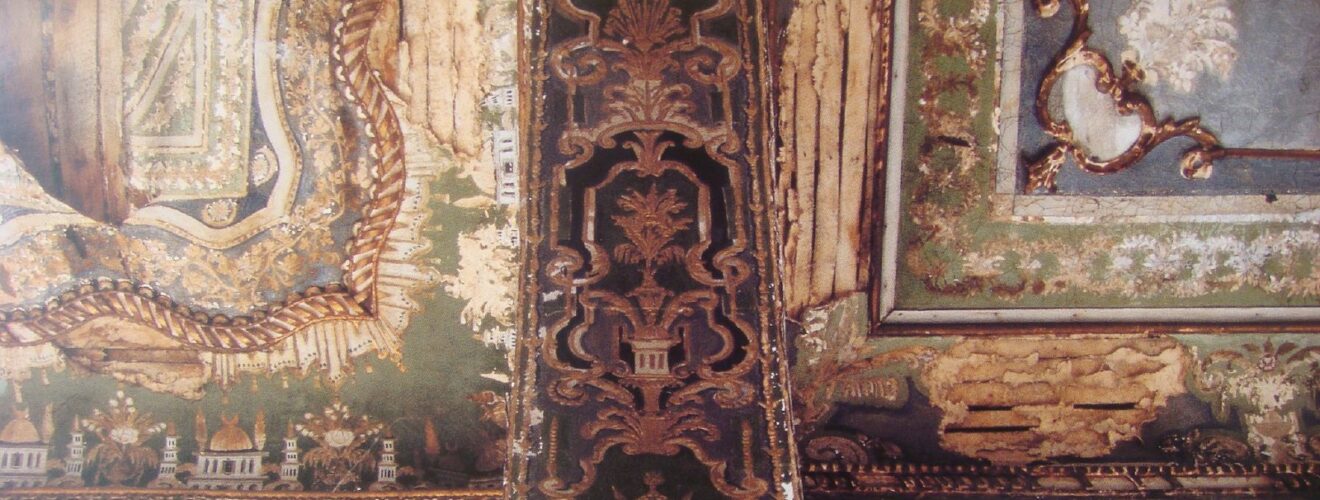Ancient Archaeology: How We All Lose from Looting

The market for illicit antiquities, especially from Syria and Iraq, has become the focus of media and public attention in recent years (see e.g., 1, or 2). New laws and policies, many following several targeted UN Security Council Resolutions (UNSCRs) or major international conventions are aiming to stem the trade in ancient artefacts transported out of conflict zones. Art collectors may claim they saved these priceless treasures from falling victim to conflict. More official sources, however, like the US government and UNESCO, condemn the trade.
They argue that Syrian and Iraqi antiquities have most likely been unearthed by the Islamic State (IS) group, who make fabulous sums from the sale of their loot. A report released by the US Homeland Security Committee estimated antiquities trafficking to be the militia’s third biggest source of income, and the money they make from it “well into the tens of millions”.
Considering this evidence, as can logically claim that Western art collectors are funding terrorism. However, the figures cited rely mainly on news media. These media in turn cite activists working against the looting and trafficking of antiquities. By tying the international grey market for antiquities to the fight against terror, the latter managed to draw public attention to their cause. But, as noble an effort as this may be, the situation on the ground is more complicated than that.
One thing to keep in mind is that archaeological looting and trafficking of antiquities is by no means exclusive to the Middle East. It is especially prevalent in conflict and civil war, but it happens in economic crisis as well. Art dealers and collectors — and even well-respected museums in richer parts of the world — are always ready to exploit communities and individuals in culturally rich, but economically poor regions. Looting for the international art market happens in South- and Mesoamerica, in India and Southeast Asia, and even in Italy and Greece.
The Scottish Centre for Crime and Justice Research, housed within the School of Social and Political Sciences at the University of Glasgow, is one of the institutions that answer UNESCO and other authorities’ call for qualified research into the international grey market for antiquities. Together with scholars from other universities, they maintain the working group Trafficking Culture3, which consists of researchers with a range of backgrounds including law, criminology, and archaeology.
It is rare that scholars from the diverse field of archaeology, dealing with different cultures in different times and places, work together on a single topic; but in this case, an international approach is not only helpful, but essential to the research. Wherever it happens, when ancient artefacts are looted, their scientific value is lost. In a modern excavation, archaeologists pay attention, not just to the finds they make, but also to their context. For example, the situation in which an object is found gives clues about its use and its age, and sometimes even about the social or religious life of a historical people. Context often tells experts more about history than the ancient objects themselves, but illicit digging destroys it in many ways.
Less attractive objects which can’t be sold on the market but hold just as much scientific interest to archaeologists get thrown away. Remains of ancient foodstuffs, which, if scientifically analysed, could tell us about the eating habits of an ancient culture, might be ‘cleaned out’ to make an ancient pot more sellable. The layers of an ancient site — known as stratigraphy — which are immensely important in establishing the chronology of a findspot, are often destroyed in the process. In this way, even if an object ends up well-cared for in a public museum, the biggest part of its history is lost forever: it is reduced to a mere trinket.
But it’s not just science that suffers from looting: archaeological landmarks, which under different circumstances might attract tourists, end up damaged beyond repair. In this way, local communities suffer from looting and even lose their chance to engage with their heritage in a sustainable way. Criminal networks that feed into the international art market exploit their desperate situation.
There is little doubt that IS is responsible for large-scale destruction of the cultural heritage of Iraq and Syria. The fighters of the self-styled caliphate have invaded and subsequently destroyed several iconic sites of the ancient world — among them are Syrian Palmyra and the Assyrian palace cities in the Mosul area of Iraq. Not only do they destroy ancient heritage, they also profit from it. The militants are reported to have installed a 20% tax on looted antiquities in controlled areas4. They even seem to have ventured into treasure hunting themselves. A group of IS fighters on their way to Syria were arrested in Turkey in 2015. Tellingly, they carried a book on ancient coins and a map of northern Syria. It is unlikely that they had acquired these items for their love of numismatics; rather, it seems they were out to loot the Syrian ‘tells’ — that is, the remains of ancient settlements5.
The researchers at Trafficking Culture treat the trade in illicit antiquities as a form of organised crime: a criminal endeavour in which different persons have individual tasks assigned to them for the common goal of profit. This profit, however, is rarely equally spread in the antiquities market. Research suggests that the big money is made in the auction houses and private galleries of London, New York, Dubai and other ‘rich’ places; not in the countries where antiquities are dug out of the ground. These so-called ‘source countries’ are often countries where ancient cultures flourished, but today’s societies falter. Local diggers rarely get paid more than a few dollars for their loot. Only after being laundered, that is, given a legal appearance, can they be sold for millions.
In light of this, the supposed millions IS gains from selling looted antiquities seems very unlikely. Several independent researchers, like the archaeologist and blogger Christopher Jones, have tried to find reliable evidence for the staggering sums that the terrorists are supposed to make, but have found only estimates, misquotations, and hearsay6. To complicate things further, satellite imaging studies show that IS is not the only group that loots ancient artefacts in Syria and Iraq. Hundreds of archaeological sites, inside and outside of IS territory, have been ransacked on a large scale. Who the looters are is not always clear, but the satellite images suggest that none of the armed groups in this multilateral conflict are free of blame.
However, some of the archaeological looting in the Near East is not done by soldiers of any faction, but by civilians. The civil war in Syria has destroyed the livelihoods of millions, and displaced millions more. In the disputed parts of Iraq, the situation is no better. People who live side by side with prized relics of the past are running out of ways to feed their families. As a last resort, they often turn to hunting for treasures on the ancient sites. This phenomenon is sometimes called ‘subsistence digging’ by academics, to avoid the criminalisation inherent in the term ‘looting’. It is hard to blame subsistence diggers — as long as there is a demand for these objects, people will do what it takes to survive. Even if it means destroying one’s own cultural heritage for the benefit of a few rich people half a world away.
This is the true evil of antiquities collecting: the demand for pretty things from exotic lands will lead to looting, and this does not only put archaeological insight at risk, but also people who are already vulnerable. Antiquities dealers and collectors may not all ‘fund ISIS’, but they do profit from a horrendous situation and further exploit the victims of a brutal conflict. Humanity is losing its history by letting archaeological sites be destroyed for the sake of a few prized objects, in Syria, Iraq, and beyond.
This article was specialist edited by Emily May Armstrong and copy edited by Barry Robertson.
References
- In The Guardian: https://www.theguardian.com/artanddesign/2016/feb/26/western-art-funding-terrorism-isis-middle-east
- In The Washington Post: https://www.washingtonpost.com/opinions/islamic-state-sells-blood-antiquities-from-iraq-and-syria-to-raise-money/2014/09/14/49663c98-3a7e-11e4-9c9f-ebb47272e40e_story.html?utm_term=.58339632b3bf
- Trafficking Culture’s website: http://traffickingculture.org/
- Antiquities tax explained here in archaeologist Sam Hardy’s blog: https://conflictantiquities.wordpress.com/2014/08/17/syria-iraq-islamic-antiquities-trafficking-tax/
- Hardy again: https://conflictantiquities.wordpress.com/2015/07/17/islamic-state-antiquities-trafficking-reading-list-acquisition-transport-syria-egypt/
- More on how much IS gains from selling looted antiquities at Jones’s blog: https://gatesofnineveh.wordpress.com/2016/01/12/how-much-money-is-isis-making-from-antiquities-looting/










